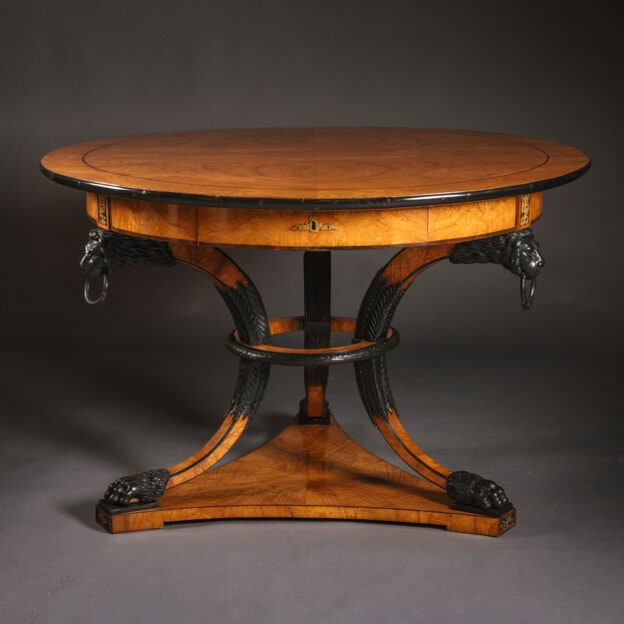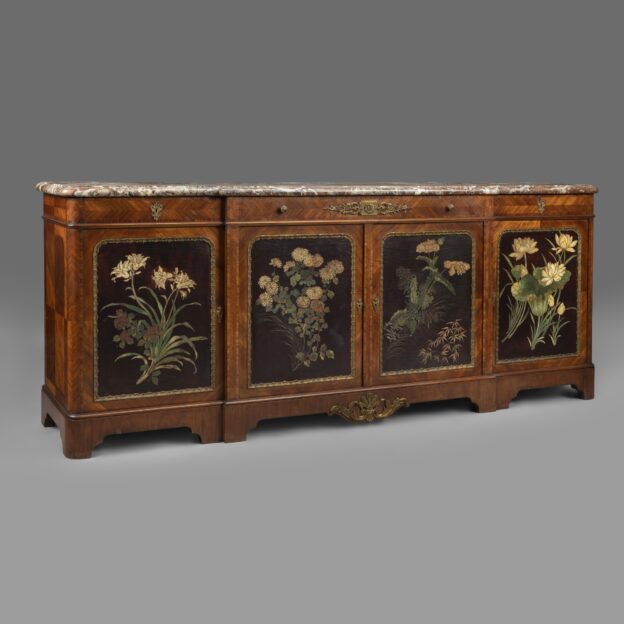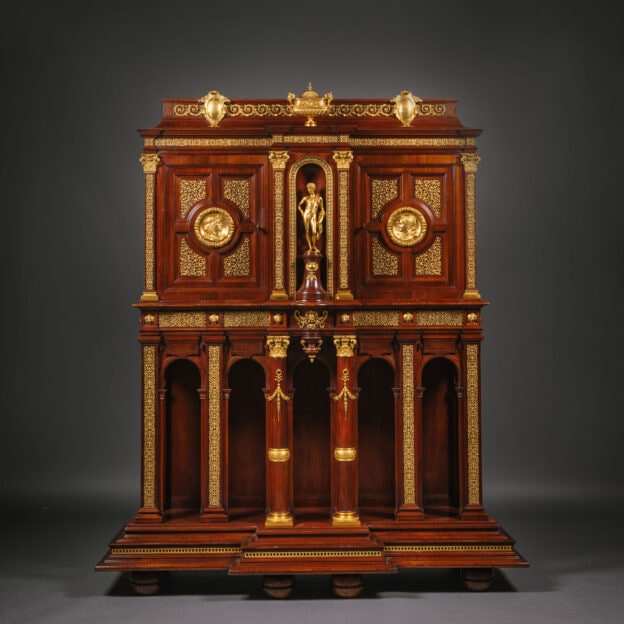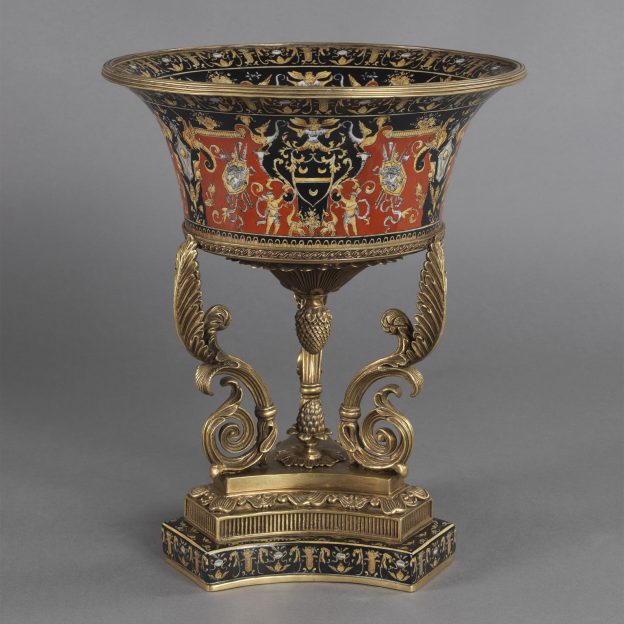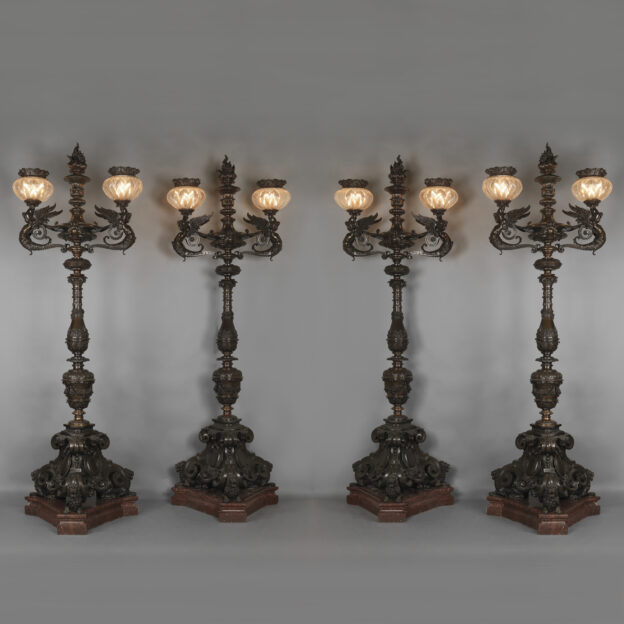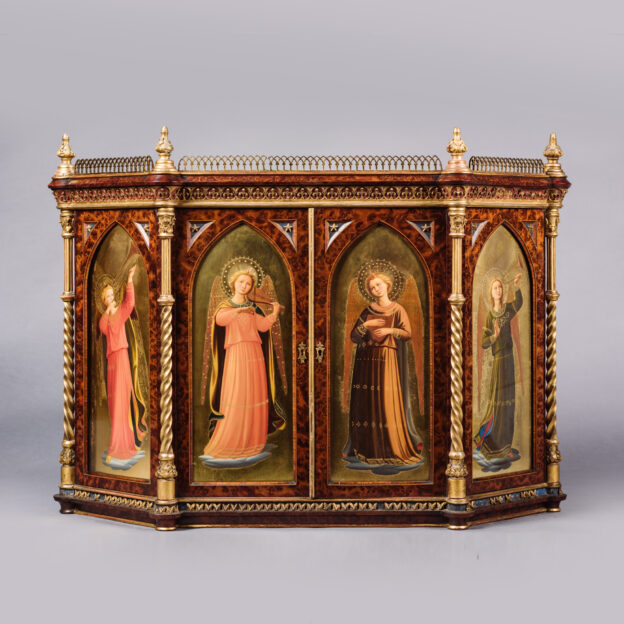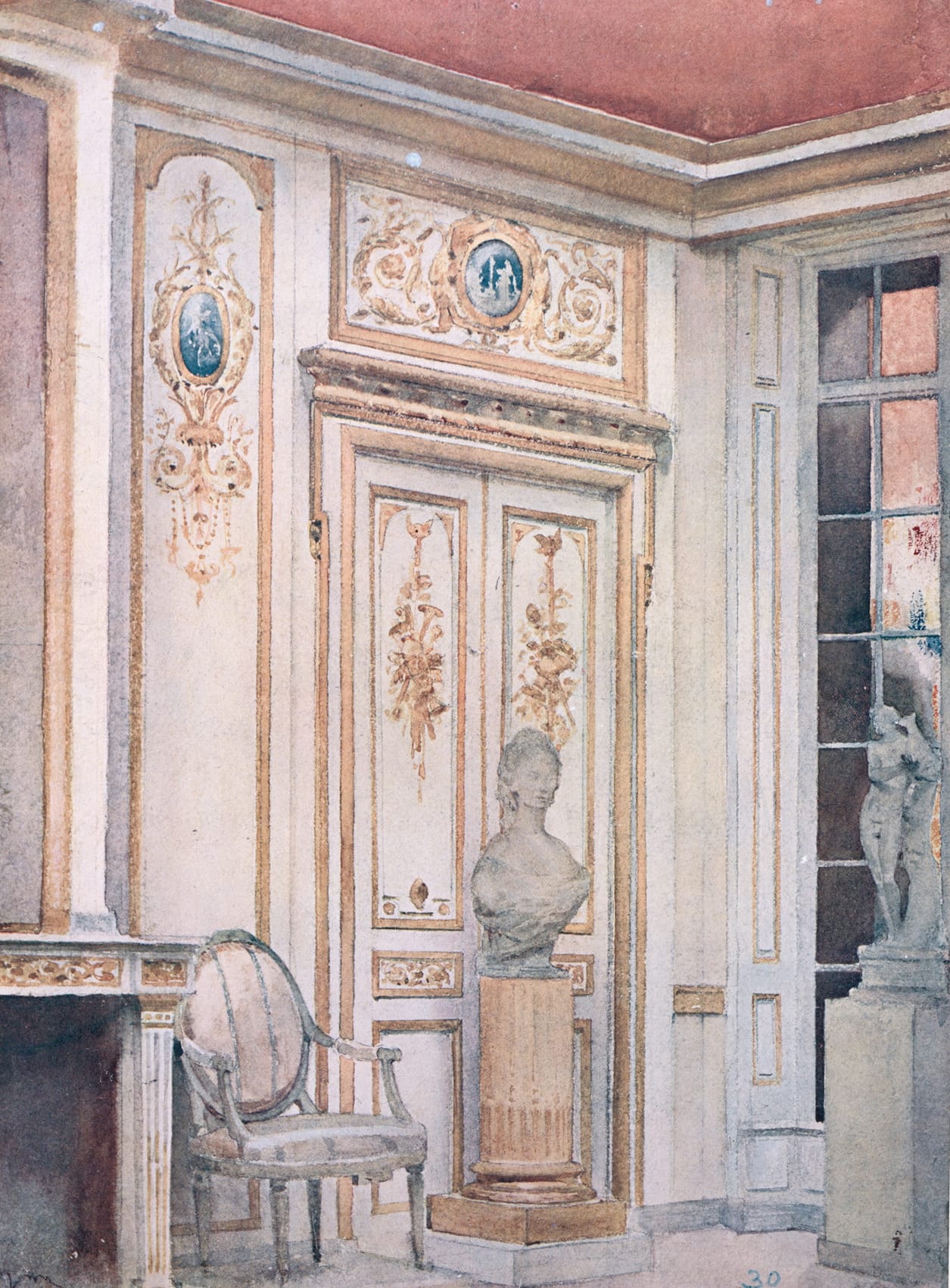ВДОХНОВЕНИЕ СТИЛЯ
Renaissance Revival
Rediscovering Classical Splendor
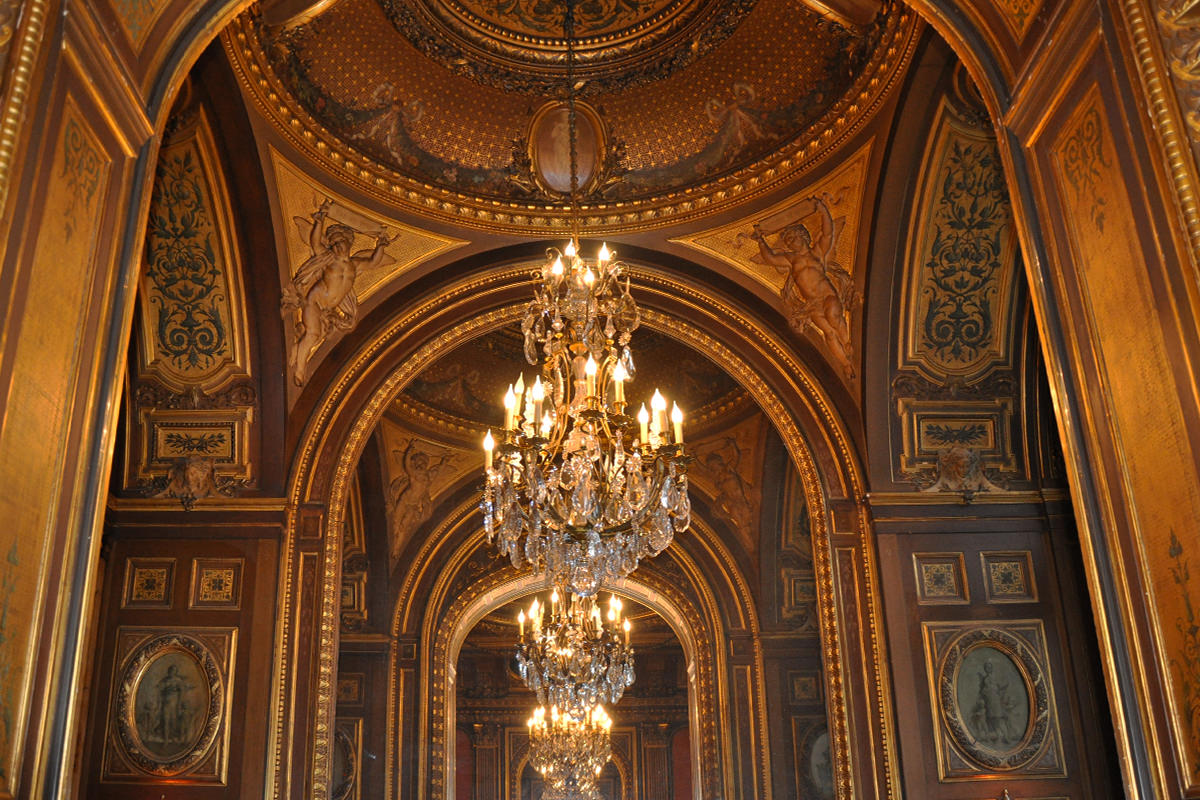
The Hôtel de Païva, Paris.
In nineteenth century decorative arts, the Renaissance Revival, is one of the more varied of the historicist styles, and therefore one of the most complex and ultimately rewarding to embrace. The Renaissance proper, began in Florence in the early 15th century and is defined as a transition from the Middle, or Dark Ages, to modernity whereby artists and luminaries such as Leonardo da Vinci and Michelangelo, revived and sought to surpass the ideas and achievements of classical antiquity. The origin of Renaissance architecture is generally accredited to Filippo Brunelleschi (1377–1446) who wished to bring greater “order” to architecture, resulting in strong symmetry and careful proportion.
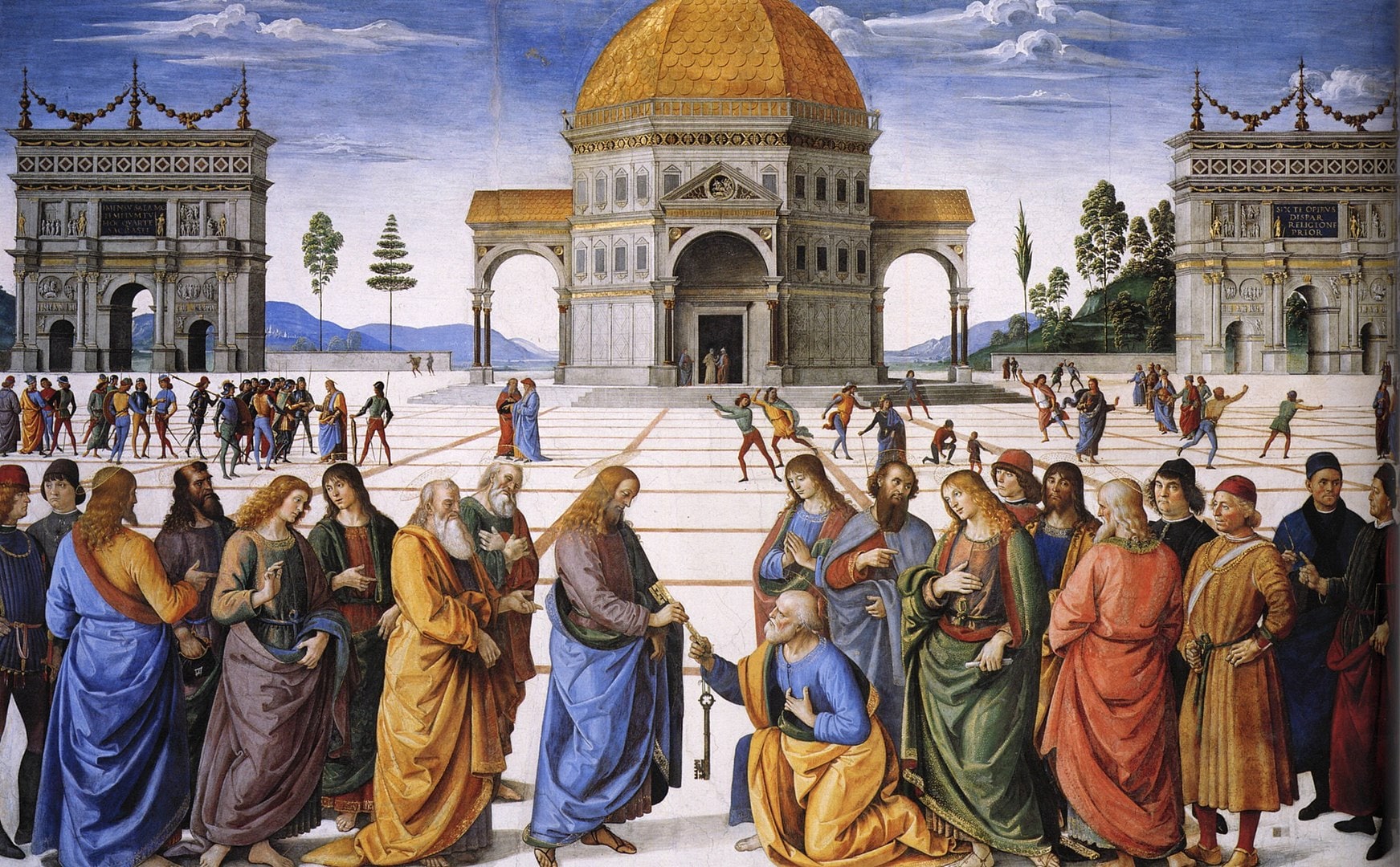
The Delivery of the Keys fresco, 1481–1482, Sistine Chapel, by Perugino (1481–1482), features both linear perspective and Brunelleschi’s architectural style.
The word “Renaissance” is borrowed from the French language, where it means “re-birth”. In France, Gothic architecture, as exemplified by Notre-Dame Cathedral, was replaced by the French Renaissance style of the royal châteaux of the Loire Valley. The Renaissance spread to France following Charles VIII invasion of Italy and through Germany and the Low Countries. Emperor Maximilian I of Habsburg, who ruled from 1493-1519, was the first truly Renaissance monarch of the Holy Roman Empire. The devastation of the Black Death, especially in Florence, promoted the birth of Renaissance ideals, meaning people placed more emphasis on living than on an imagined afterlife, whilst simultaneously encouraging piety which resulted in the building of churches and the commissioning religious works of art, thus stimulating the arts.
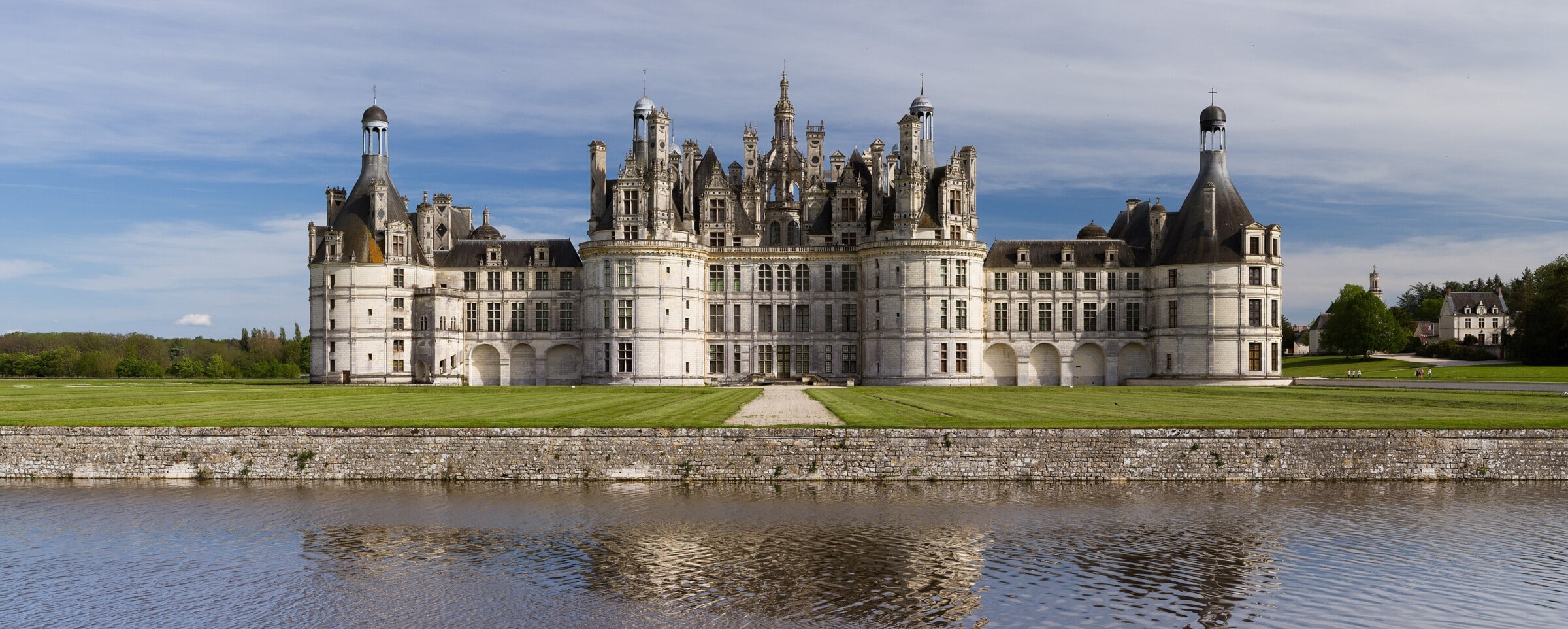
The Château de Chambord is distinctive of French Renaissance architecture, mixing French medieval forms with classical Renaissance structures. It was built between 1519–1547 as a hunting lodge for Francis I, King of France.
The Renaissance Revival is coined in reference to architecture, but the lengthy timespan of the Renaissance itself, and the divergent forms of Renaissance architecture across Europe, make one distinctive ‘revival style’ difficult to define. Therefore, from the 19th century, buildings as different at the Texas State Capitol (completed in 1888), inspired by St. Peter’s Basilica in Rome, and Loire Valley château inspired Waddesdon Manor, in Buckinghamshire (completed in 1883), can be described as Neo-Renaissance. However, the common characteristic of the Renaissance Revival can be said to be the Italianate.
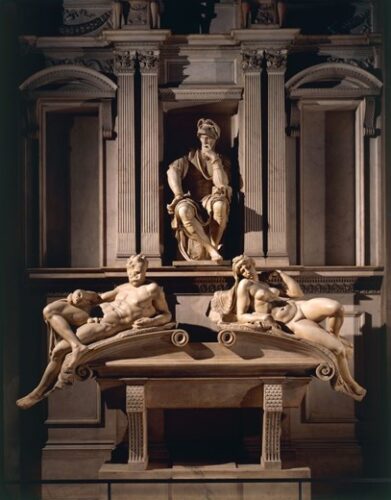
The tomb of Lorenzo de’ Medici, Duke of Urbino, 1524–34, by Michelangelo. The last decade of Lorenzo De’ Medici’s reign of Florence was the highlight of artistic contributions to the Renaissance.
The figural candelabra, or torchères, flanking the staircase of the Palais Garnier Opera house in Paris are definitive examples of the grandeur and opulence of the ‘Renaissance Revival style’ as imagined during the Second Empire. Sculpted by Albert-Ernest Carrier-Belleuse (1824-1887) these candelabra were cast by Christofle in 1873 from full-scale plaster models. They are entitled ‘Torchère au tambourin’, representing harmony or music, and ‘Torchère à la couronne’, representing spirits of the night.
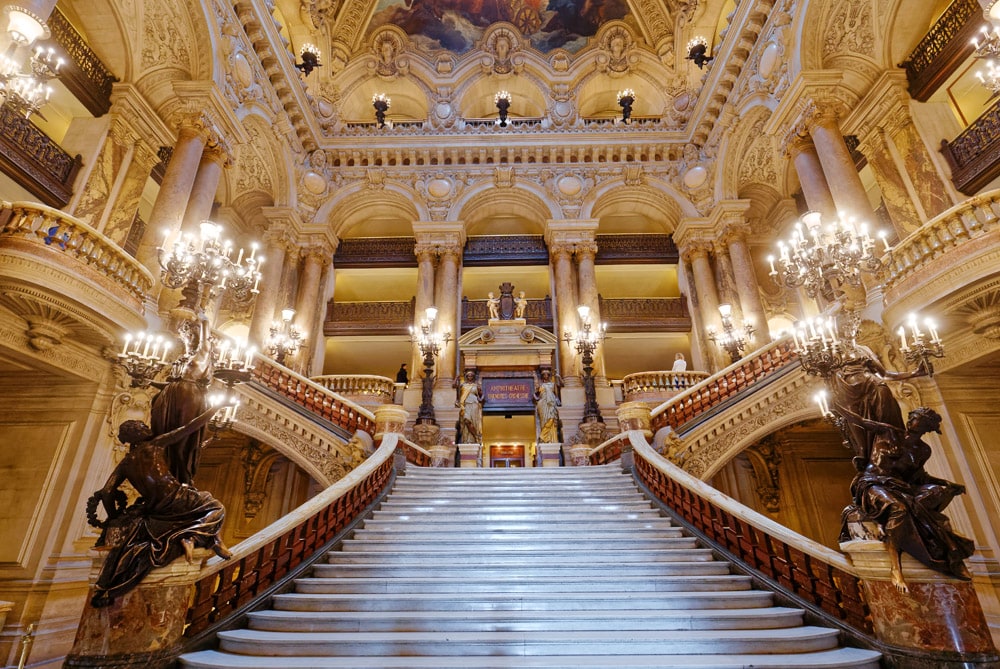
The influence of the Renaissance on the decorative arts was strongest in France and during the Second Empire of Napoléon III. By the mid-nineteenth century historical interest in the Renaissance was promoted by exhibitions such as the ‘Musée Rétrospectif’ of the Union Centrale exposition in 1865, the ‘Histoire du Travail’ exhibition at the Paris Exposition Universelle of 1867, and the formation of private collections, notably those of the Rothschilds, which were exhibited at the South Kensington Museum in London in 1862 as ‘Works of art of the Medieval, Renaissance, and more recent periods’. Interest in historical design, and especially works of art from the Renaissance, blossomed because of a burgeoning market of collectors drawn from the middle classes and a newly wealthy elite. The interest of this new collecting class was fed by publications such as The Art Journal and La Gazette des Beaux-Arts , which were lavishly illustrated art magazines.
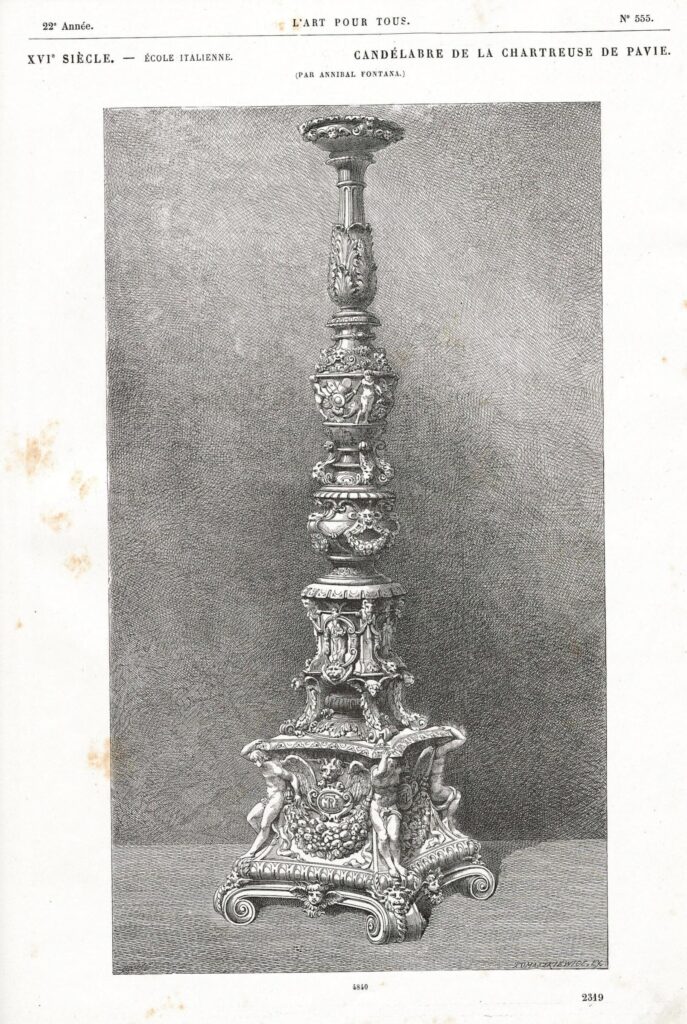
Of the various art journals of popular in late 19th century, ‘L’Art Pour-Tous’ was the most informative source of designs for antique works of art. Lavishly illustrated in phenomenal detail by Émile Reiber and Claude Sauvageot, ‘L’Art Pour-Tous’ was a rich reference source for connoisseurs and contemporary designers seeking inspiration. Here is a drawing of a candelabrum by the Italian sculptor Annibale Fontana (1540–1587) made for the Certosa di Pavia monastery in Lombardy, Northern Italy. The design of this candelabrum informed many 19th century imitations and reworkings. (l’Art Pour Tous (1861-1904) – XVIe Siècle – Italie, pl. 4840).
The study and appreciation of Renaissance art informed a new generation of architects and designers to make their own neo-renaissance creations. Édouard Lièvre (1828-1886) published in 1877 his highly influential ‘Les arts décoratifs à toutes les époques’, a lavishly illustrated compendium of decorative arts. Arranged in chronological order, the collection of beautifully printed colour plates traces a history of decoration and ornament including textiles, ceramics, glass, wood, and metal. Édouard Lièvre himself became a celebrated designer of furniture and objets d’art and his favoured styles were the Neo-Renaissance and Chinoiserie.
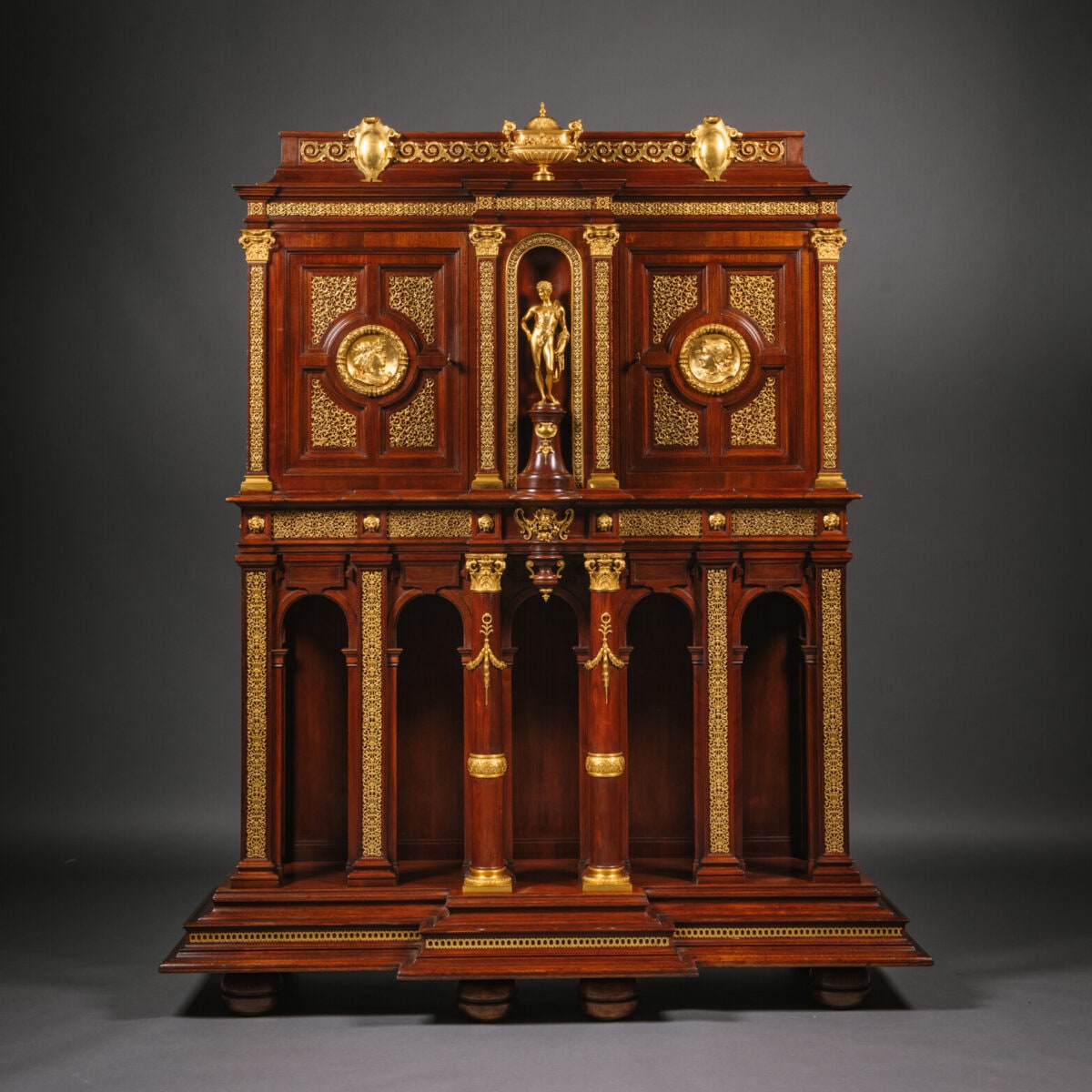
This cabinet was designed by Édouard Lièvre and belonged to him personally, being sold after his death at Hôtel Drouot in March 1887. It is a spectacular Neo-Renaissance creation centred by a statuette of Antinous, a reduction after the Belvedere Hermes. The portrait relief roundels of King Charles VII of France ‘The Victorious’ (1403-1461) and his mistress Agnès Sorel (1422-1450). King Charles VII was a renaissance hero of France for re-establishing French military supremacy over the English by ending the Hundred Years’ War and with it any English claims to the French throne.

A taste for the Renaissance swept France from the time of the reign of Louis Philippe (1773 -1850), continuing and broadening its influence under the Second Empire. Renovations to the château of Fontainebleau undertaken in 1860, for Emperor Napoléon III, contributed to the renaissance revival with Renaissance Style furniture made by Maison Fourdinois and Grohé Frères designed to complement masterful interiors designed by Sebastiano Serlio in the 1530s.
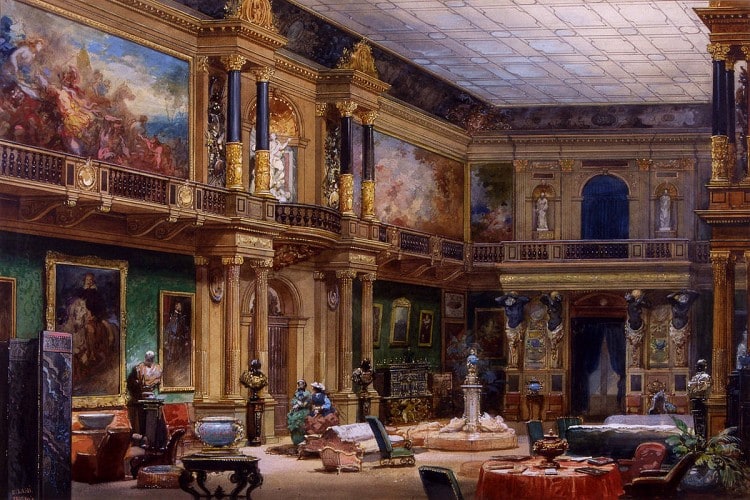
The Great Hall at Château de Ferrières painted by Eugène Lami circa 1865.
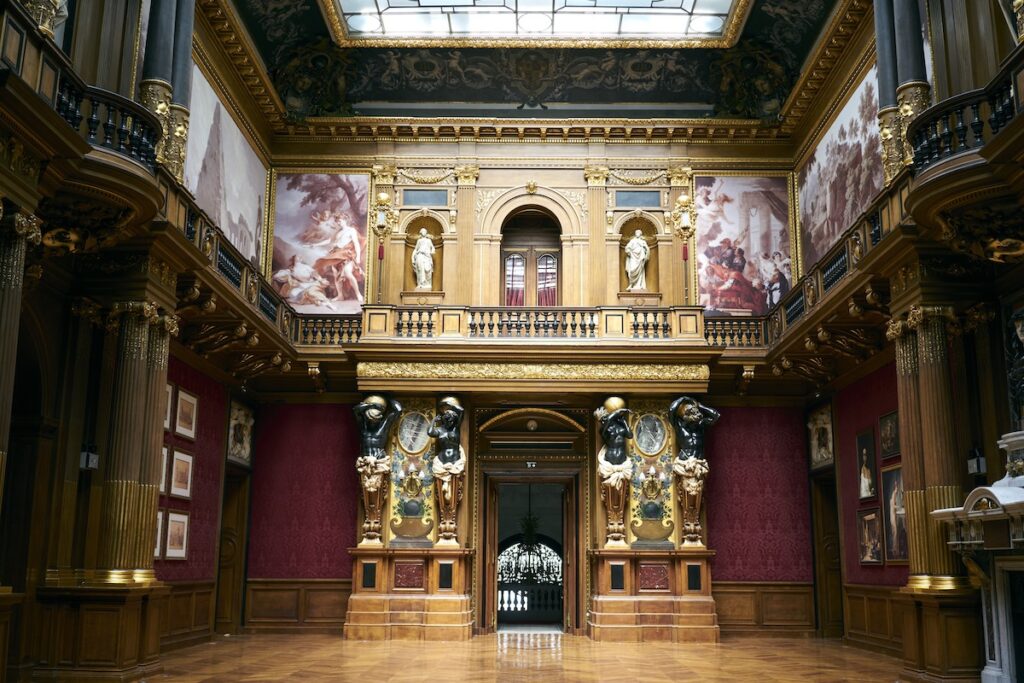
The Neo-Renaissance Style is writ large in the Great Hall at the Château de Ferrières, built between 1855 and 1859 for Baron James de Rothschild. Designed by Joseph Paxton, of Crystal Palace fame, the hall is lit by a glass roof and the atlas columns and caryatids are by Charles Henri Joseph Cordier
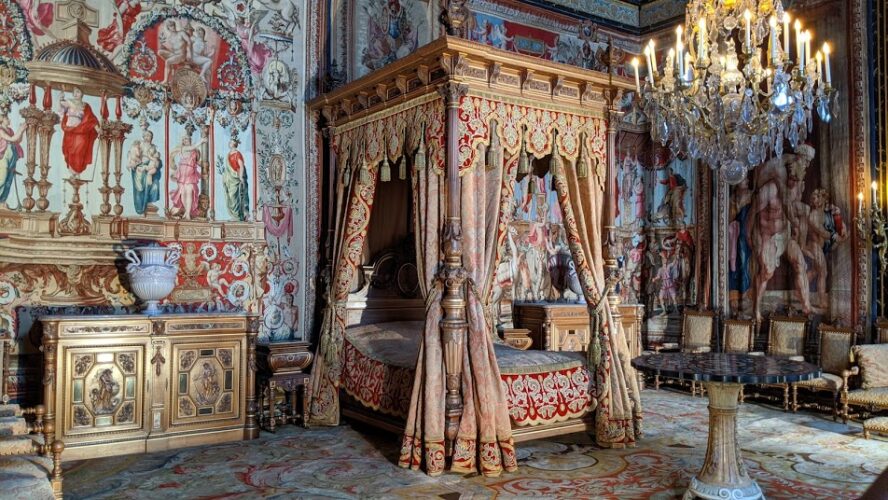
Bedroom of Anne of Austria (1601-66), queen of France to King Louis XIII, at the château de Fontainebleau with Renaissaince Revival bedside cabinets made by Alexandre-Georges Fourdinois as part of a refurbishment made for Emperor Napoleon III in 1860.
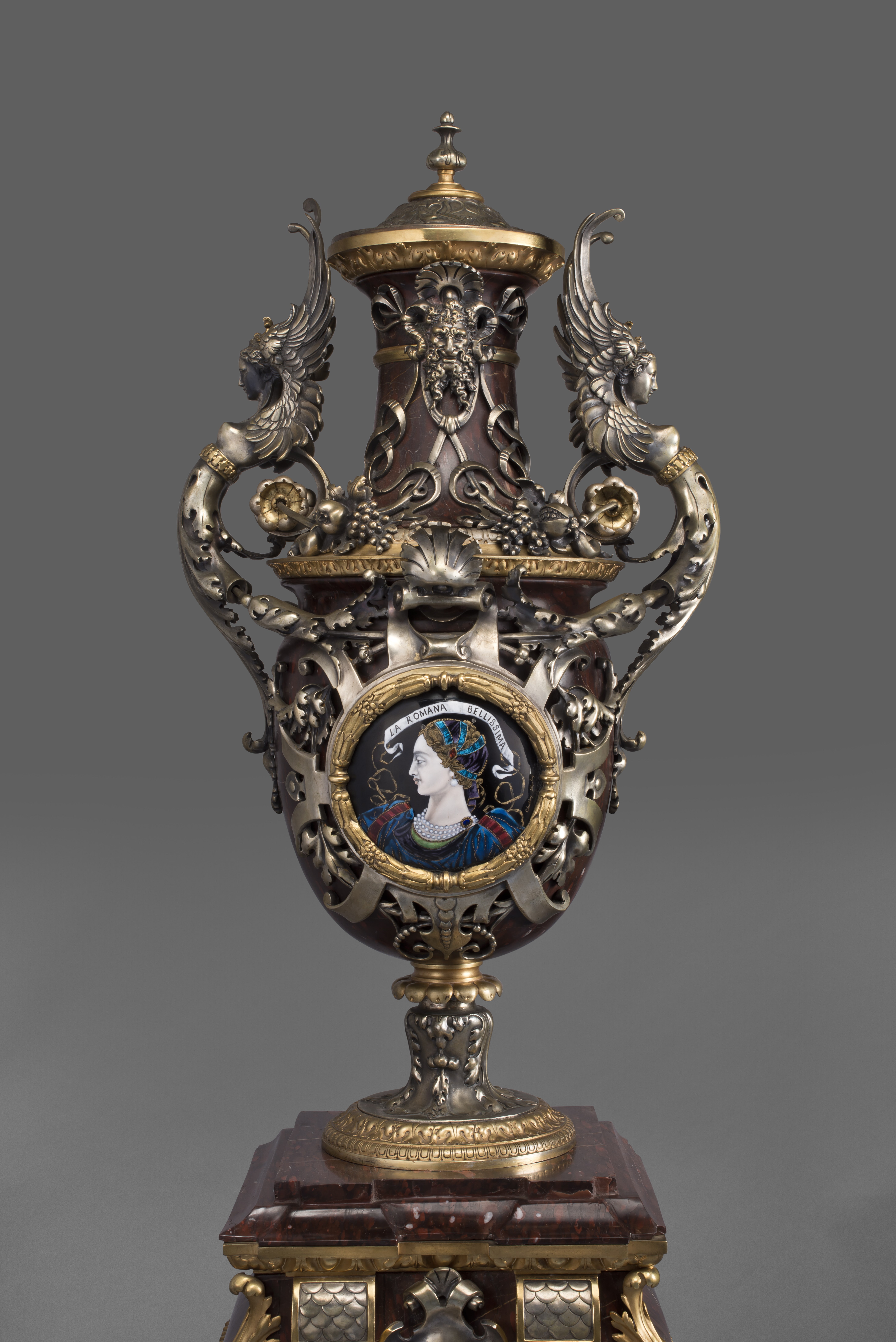
This vase, one of a pair which stand on matching pedestals, is a Neo-Renaissance creation by Ferdinand Barbedienne and dates to the 1860s. The complex and masterful technique of painting in enamel had been perfected in Limoges during the Renaissance and was revived with considerable skill during the 1860s by Alfred Meyer and Claudius Popelin. The portrait roundels to the vases are of Renaissance ladies painted by Popelin, who adopts both the technique and style of Limousin enamellers of the sixteenth century.
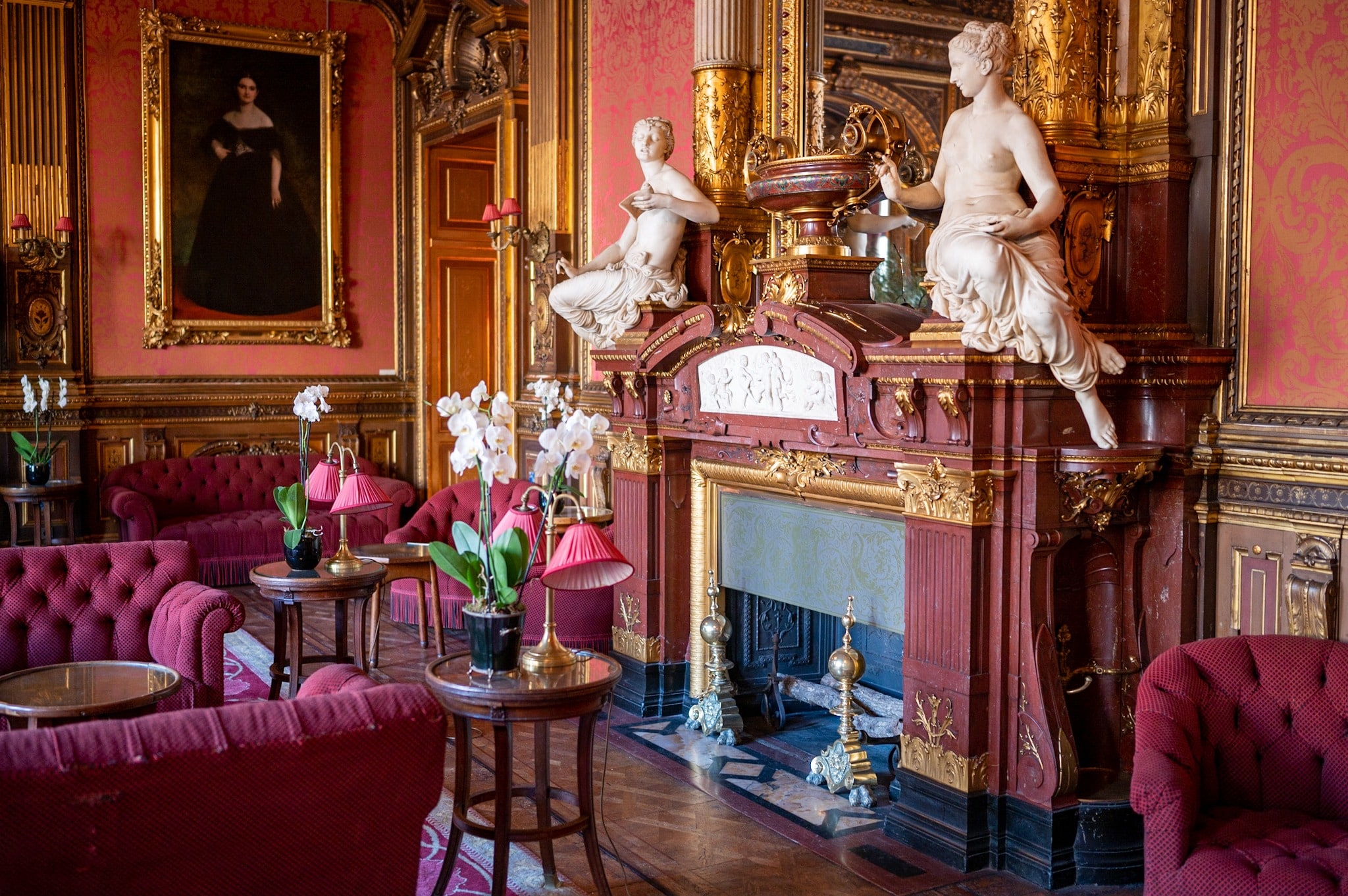
The fireplace with figures by Albert-Ernest Carrier-Belleuse in the Grand Salon of the Hôtel de Païva. Built between 1855 and 1866, after the marriage of the courtesan Thérèse Lachman, known as La Païva, to Count Guido Henckel von Donnersmarck, one of the richest men of his time. The Hôtel de Païva is the fullest flourishing of the Second Empire Neo-Renaissance style.
Architecturally and in interior design, the Renaissance Revival was most wholeheartedly adopted in the United States, notably for the Newport Cottages of Rhode Island and other Gilded Age mansions, as well as for public and civic buildings. Of the various interior decorating firms who created luxurious and artist interiors for the mansions of wealthy American financiers and industrialists, it was the firm of Herter Brothers who favoured the Neo-Renaissance style, creating remarkably stylized rooms and distinctive furniture.
‘The Breakers’, Newport Rhode Island, built in the Neo Italian Renaissance style in 1895 for Cornelius Vanderbilt II.
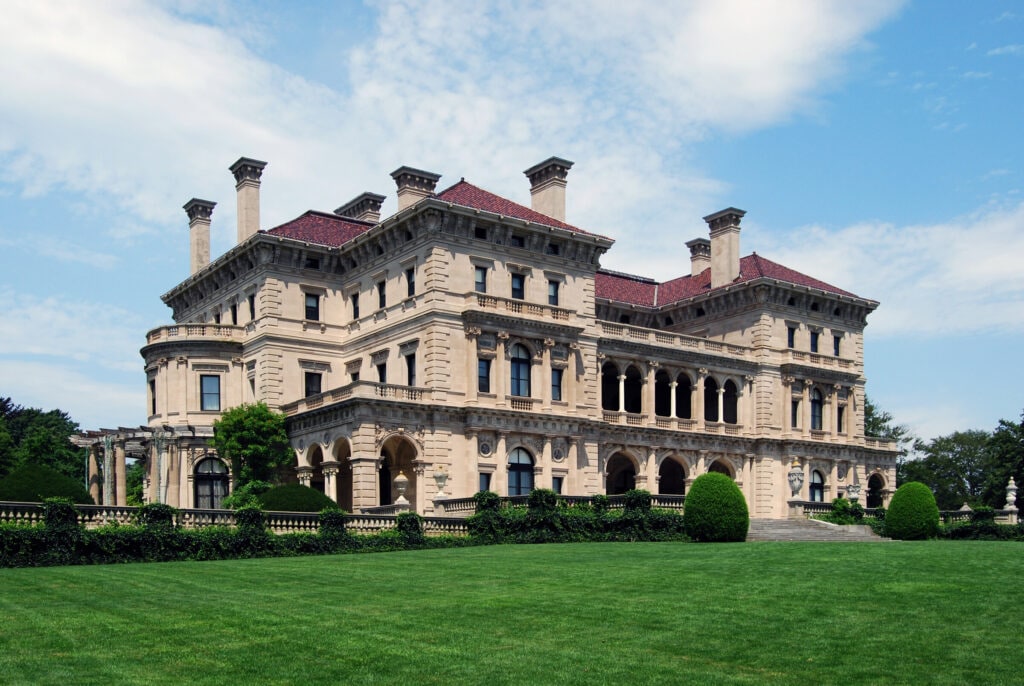
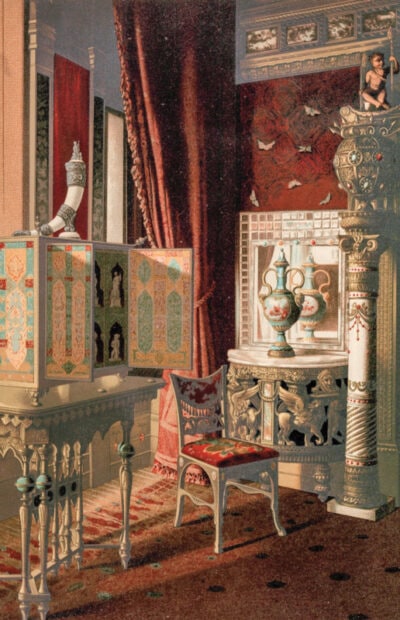
View of the drawing room from ‘Mr. Vanderbilt’s House and Collection’ published in 1883. The room was decorated by Herter Brothers and they made the giltwood Neo- Renaissance winged lion console table. The enamel cabinet-on-stand is by Ferdinand Barbedienne, Paris. Both pieces are today in the collection of the Metropolitan Museum of Art, New York
That the Renaissance Revival ranks pre-eminent among the historicist styles is in part because it is not purely an artistic movement, but a philosophical concept. The idea of the ‘Renaissance man’, that a man is limitless in his capabilities, appealed greatly to nineteenth century humanism. It spoke to Victorian notions of self-improvement, the ideal of the polymath, and of mastery of the natural world.
Further reading:
https://madparis.fr/le-neo-renaissance
https://madparis.fr/l-extraordinaire-hotel-paiva-1480
https://driehausmuseum.org/about/view/collection
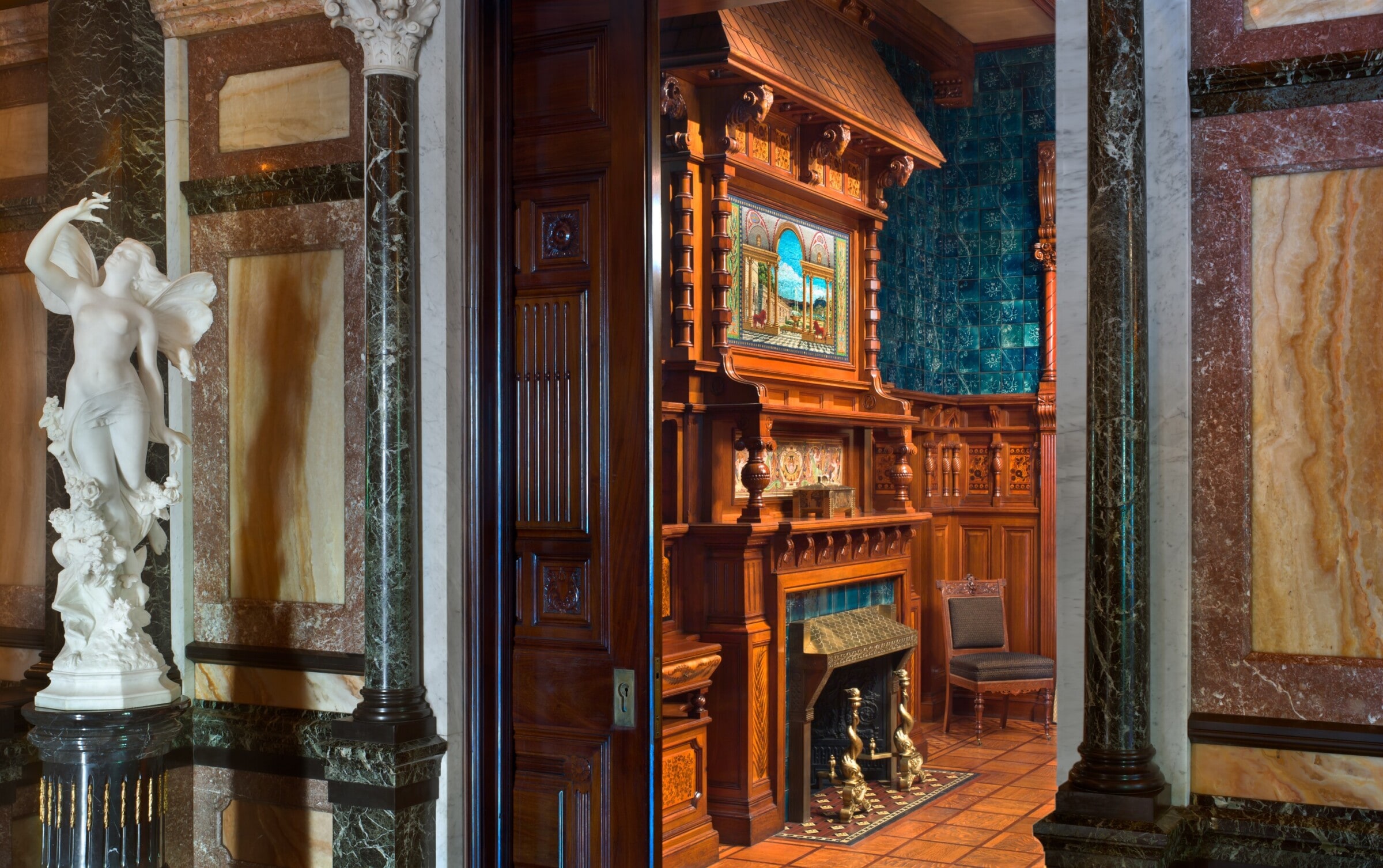
The Reception Room at the Driehaus Museum, Chicago (© Alexander Vertikoff, 2011).
